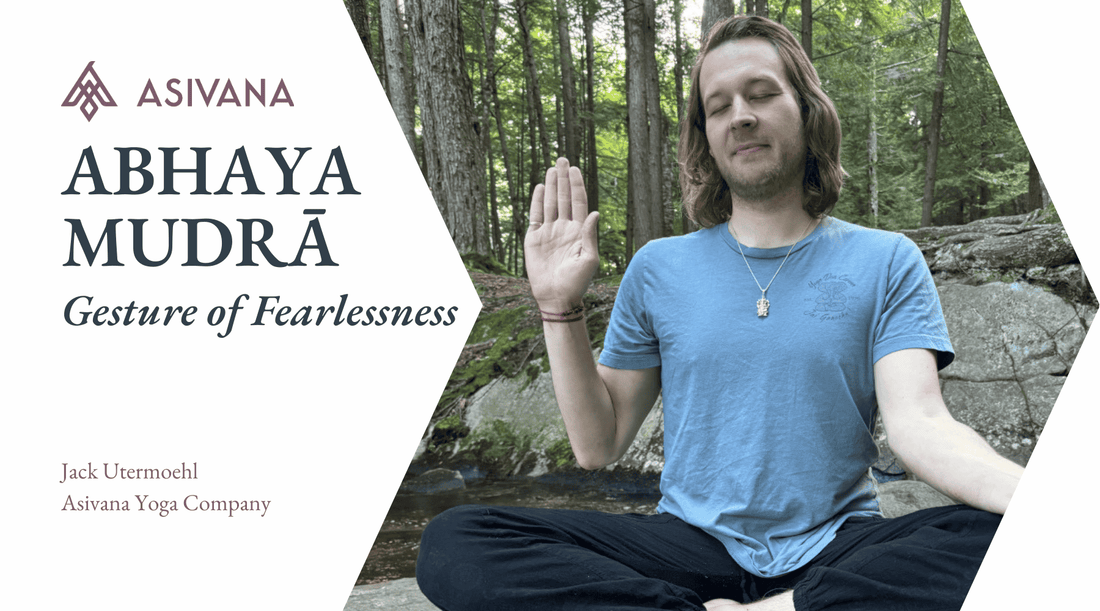
Abhaya Mudra - Fearlessness Gesture
Jack UtermoehlShare
Abhaya Mudra (Fearlessness Gesture)
Sanskrit Name: Abhaya Mudrā - अभय मुद्रा
English Translation: Gesture of Fearlessness
Phonetic Spelling: Ah-BHAH-yah Moo-Drah
Abhaya mudra is one of the most recognizable hand gestures in Eastern spiritual traditions, symbolizing protection, peace, and the dispelling of fear. The word abhaya translates directly to “fearlessness,” and this mudra has historically been used to invoke courage, confidence, and safety.
Often seen in depictions of Ganesh, Nataraj, and other deities, this gesture is a sign of divine protection and reassurance to followers. The upward-facing palm in abhaya mudra acts as a shield, a powerful reminder of strength and ahimsa (non-violence).
In yoga and meditation, abhaya mudra serves as a tool to release internal fears and anxieties. It helps the practitioner cultivate inner courage and self-confidence, making it an essential mudra for those experiencing doubt or unease. The spiritual significance of abhaya mudra lies in its ability to channel energy toward emotional resilience and fearlessness.
The raised right hand symbolizes active energy and the outward projection of protection and reassurance. By directing prana outward, abhaya mudra creates a shield of fearlessness around the practitioner.

Instructions to Perform Abhaya Mudra
Create a calm environment where you won’t be disturbed. Find a comfortable seat and take a few deep breaths to settle your mind.
Hand Position: Raise your right hand to chest height with your palm facing outward and fingers pointing up. Keep your left hand relaxed on your knee, in your lap, or in another mudra. Ensure your right palm is open and slightly relaxed rather than rigid.
Posture: Sit comfortably in a grounded position such as sukhasana (easy pose) or stand in tadasana (mountain pose) if preferred.
Breathing Technique: Pair the mudra with deep, rhythmic breathing. Inhale through the nose, allowing the belly to expand, and exhale slowly through the mouth, releasing any tension or fear with each breath.
Duration: Hold this mudra for 5-15 minutes while focusing on feelings of safety and courage. You can also practice it during meditation or pranayama.
Benefits of Abhaya Mudra
Abhaya mudra helps dispel fear, anxiety, and feelings of uncertainty. It evokes self-confidence and a sense of emotional stability.
Physical Benefits: This mudra soothes the nervous system, reduces tension, and can help with calming stress-related physical symptoms such as elevated heart rate or shallow breathing.
Mental Benefits: Reduced anxiety and improved self-security.
Emotional Benefits: Encourages feelings of safety, peace, and fearlessness.
Spiritual Benefits: Abhaya mudra instills a deep sense of trust and surrender to the universe, fostering inner strength and the ability to remain calm in challenging situations.
Capture your insights and deepen your connection with our Yoga Journal.Elevate Your Mudra Practice
Symbolism and Meaning of Abhaya Mudra
Abhaya mudra dates back thousands of years and has been commonly seen in depictions of Ganesh, where it represents divine protection and peace. It was often used by spiritual leaders to reassure followers and symbolize fearlessness in the face of adversity.
In Buddhism and Hinduism, abhaya mudra signifies the spiritual protection offered by deities and enlightened beings. It is a powerful symbol of non-violence (ahimsa) and peace.
The raised hand in abhaya mudra symbolizes a halt to fear and harm. It projects a sense of power and calm that overcomes obstacles. The open palm is an expression of goodwill and protection.
This mudra helps balance the flow of prana through the body's energy channels, calming overactive nerves and generating a sense of emotional stability. The open hand symbolizes the ability to give and receive energy freely, without fear.
When to Practice Abhaya Mudra
Abhaya mudra can be practiced at any time, especially when feeling anxious or stressed. It is effective before important meetings, public speaking engagements, or prior to any situation where courage is needed.
Practice as needed whenever fear or uncertainty arises. It can also be included in regular meditation or pranayama practices for ongoing emotional support.
A duration of 5-15 minutes is recommended to allow the calming effects to take hold, though even a few moments of this mudra can bring immediate relief.
Contraindications for Abhaya Mudra
This mudra is beneficial for anyone experiencing fear, anxiety, or self-doubt. It’s especially helpful for individuals facing major life changes, challenges, or uncertain situations.
There are no specific contraindications for abhaya mudra, as it is gentle and universally applicable.
Additional Insights on Abhaya Mudra
Affirmations: "I release fear and welcome courage into my life." / "I am safe, calm, and protected."
Visualization: While holding abhaya mudra, visualize a warm, protective light radiating from your hand, surrounding you, shielding you from harm and dissolving any fear or anxiety.
Associated Chakras: This mudra is closely associated with Anahata (heart chakra), as it promotes emotional balance and peace. It also stimulates the Manipura (solar plexus chakra), enhancing personal power and confidence.
Paired Asanas: Pairs well with tadasana (mountain pose) for standing confidence.
Related Pranayama: Nadi shodhana (alternate nostril breathing) helps balance the nervous system when used prior to performing abhaya mudra. Kapalabhati (breath of fire) can also be used to energize and build courage.
Meditation Techniques: Abhaya mudra works effectively with a mindfulness meditation focused on releasing fear and anxiety, or with mantra meditation where affirmations of protection and confidence are repeated.
Variations and Modifications
Alternative Hand Positions: None
Adaptations for Beginners: Beginners can start by practicing this mudra for short periods of 2-5 minutes, gradually increasing the duration as they become more comfortable with the gesture. You may rest your elbow on a yoga block or shelf.

Personal Insights
When I teach about abhaya mudra I like to akin it to "stop" or "talk to the hand". As these phrases make us assess or re-assess what is going on. In this way we can create fearlessness by stopping and addressing what's causing us fear and realizing that fear is unnecessary which is when we tell our fears to talk to the hand.
While abhaya is an interesting mudra to practice. I've personally used it as a symbol in my life when I encounter this gesture of fearlessness, I'm reminded to take a breath, step back, and look at what's causing me to act in fear.
Let us know your experience with abhaya mudra in the comments section.


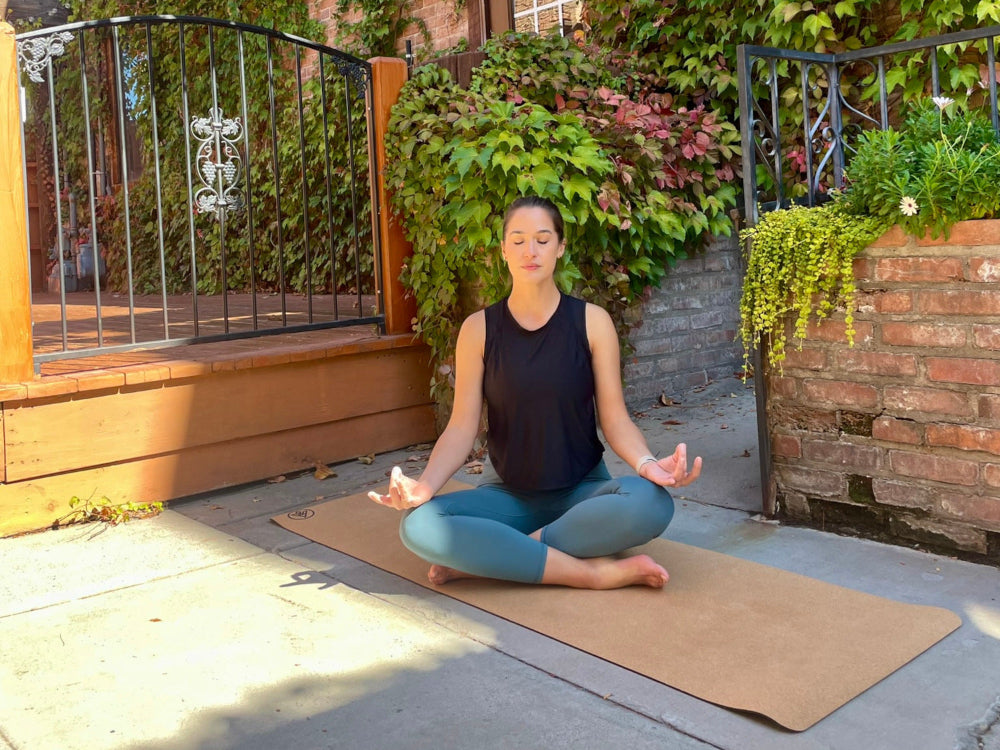


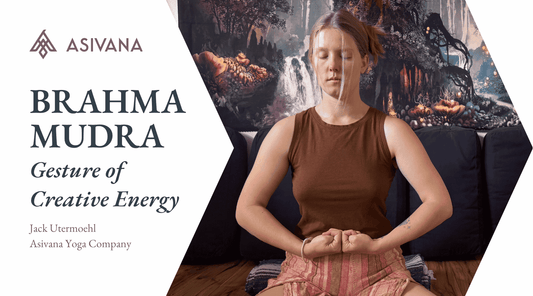
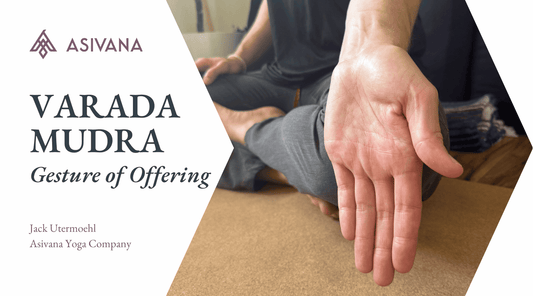
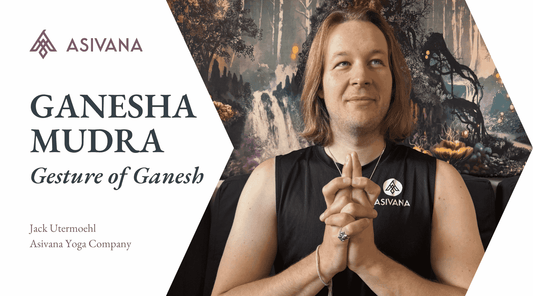




2 comments
It was so Calm and powerful .I felt from heart and sort of crying.But relaxed.Something very different and Divine I felt.
Grazie per l’aiuto che mi dai con i PDF